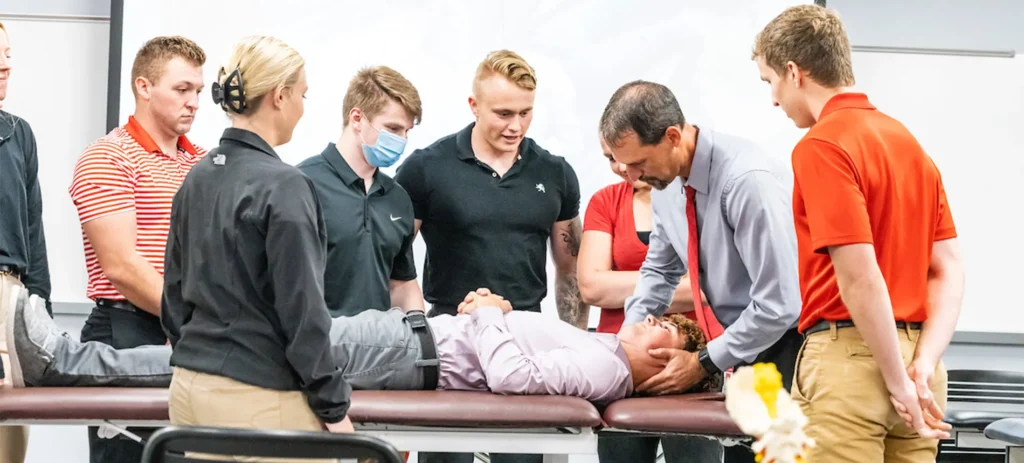Preparing for a career in physical therapy begins with the right academic foundation. Before applying to physical therapy school, students need to build strong knowledge in core sciences, human systems, and the social aspects of care.
Admissions committees look for candidates who have demonstrated their readiness through specific courses that fulfill prerequisites and prepare them for the rigorous training ahead. Understanding which classes to prioritize can make the application process smoother and the transition into advanced study more manageable.
Core Science Courses
The sciences form the backbone of preparation for graduate-level training in physical therapy. Biology provides the essential framework for understanding how the body functions at cellular and systemic levels, which is critical for comprehending human movement and healing. Students learn about genetics, microbiology, and physiology in ways that provide context for injury recovery and rehabilitation techniques.
Chemistry, both general and organic, is equally important. These classes explore the chemical processes that drive the body’s systems, from energy production to how medications influence recovery. For aspiring therapists, this knowledge provides the ability to understand how certain treatments or medications might interact with the body during physical recovery.
Physics rounds out the core sciences by offering principles that apply directly to biomechanics, balance, and the mechanics of rehabilitation. Concepts such as force, leverage, and motion may seem abstract at first, but they are highly relevant to real-world therapy. Understanding how to analyze movement from a mechanical perspective gives therapists a strong foundation for helping patients regain strength and mobility.
Anatomy and Physiology
Among the science prerequisites, anatomy and physiology are particularly important for aspiring physical therapists. These courses examine the human body in detail, from the skeletal system to the intricate network of nerves and muscles. Students gain insight into how each part of the body functions independently and as part of an interconnected system.
Anatomy provides the structural knowledge necessary for identifying injuries or dysfunctions, while physiology explains the processes that allow the body to adapt, heal, and respond to therapy. Combining these perspectives prepares students to think critically about patient cases and design effective rehabilitation strategies.
Since therapy often requires detailed knowledge of joints, posture, and movement, a strong background in these subjects allows students to transition smoothly into hands-on training. Many programs emphasize anatomy and physiology as cornerstones of professional competence.
Social and Behavioral Sciences
While the sciences are vital, the ability to understand people is just as important. Psychology introduces future therapists to theories of behavior, motivation, and learning, which are crucial when helping patients stick to treatment plans or cope with long recovery processes.
A patient may know the exercises required for recovery, but following them can be a challenge without motivation and emotional support. Psychology courses help future professionals recognize these barriers and respond with empathy and practical strategies.
Sociology also plays an important role by providing insight into the social and cultural factors that influence health. Patients bring unique backgrounds, expectations, and life experiences into the clinic, and being aware of these differences helps build trust.
Sociology coursework highlights how family dynamics, economic barriers, or cultural beliefs may shape patient behavior. This knowledge makes therapists better prepared to adapt their communication and care to suit individual needs.
Mathematics and Statistics
Numbers may not be the first thing that comes to mind when thinking about physical therapy, but mathematics and statistics play an important role in preparation. Many programs require basic algebra or pre-calculus to ensure students can handle quantitative reasoning and problem-solving tasks. These skills are useful in analyzing treatment outcomes or calculating safe exercise progressions.
Statistics is even more directly applicable to professional practice. Evidence-based care is at the heart of modern physical therapy, and statistics provide the tools for interpreting research studies, evaluating treatment effectiveness, and applying findings to real-world cases.
Being comfortable with data allows future therapists to stay current with field advances and provide patients with the most effective and scientifically grounded care.
Building a Strong Academic Foundation
Selecting the right courses before applying to graduate programs in therapy is an investment in long-term success.
Core sciences like biology, chemistry, and physics create a solid knowledge base, while anatomy and physiology provide the most directly applicable skills for clinical practice. Courses in psychology and sociology prepare students to connect with patients on a personal level, and math and statistics support the evidence-based side of care. Finally, electives such as kinesiology or nutrition enrich this foundation and help candidates stand out during the admissions process.
Thoughtful preparation allows students to enter advanced study with confidence, knowing they already have the tools to excel academically and clinically. By thoughtfully choosing courses across these areas, applicants are shaping themselves into capable, empathetic, and well-rounded future therapists.

